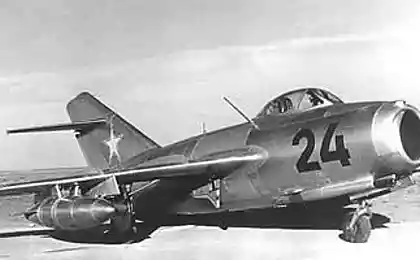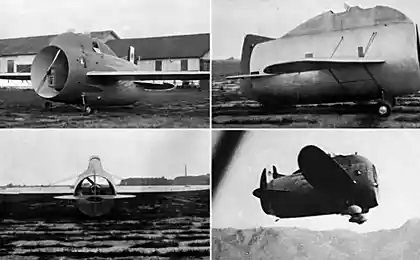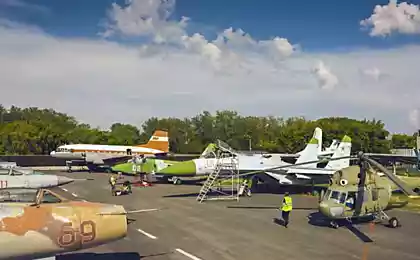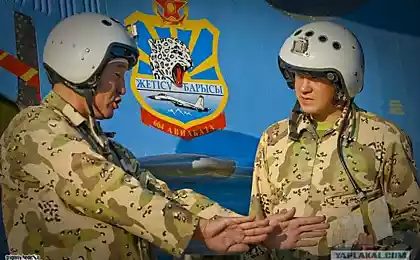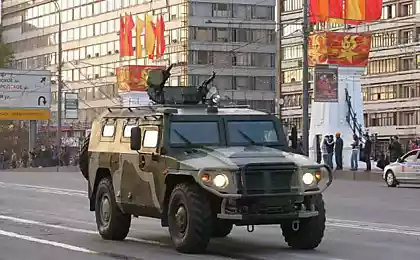1459
MiG-15
The Korean conflict has been going on for nearly six months in the morning November 30, 1950, when Bomber US Air Force B-29 "Superfortress» (Superfortress), raided an air base in North Korea, he was slightly damaged fighter, which was moving too fast, and so it is We were not able to identify the shooter and the bomber did not have time to fix it with the guidance systems of its machine gun. Jet fighters with a rectangular-wing Lockheed F-80, accompanied the bomber, took a symbolic prosecution, however, accelerated by an unidentified fighter quickly turned into a point, and then disappeared altogether.
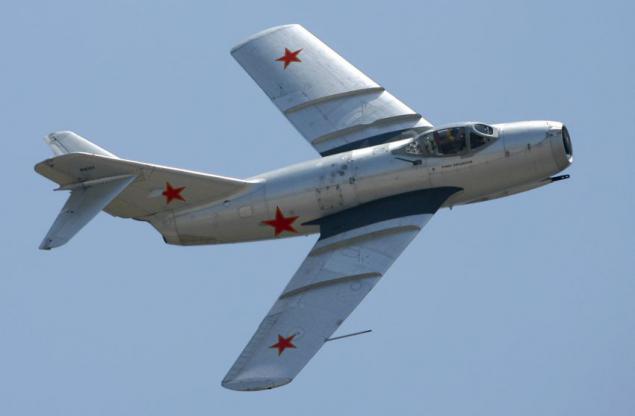
Report bomber crew has caused panic in the American-organized chain of command. Although the description of the intruder aircraft pilots did not match any of the samples used in this theater of war, US intelligence officers quickly made an educated guess. They said that it was a MiG-15, raise, most likely from an air base in the territory of Manchuria. Prior to this incident, analysts believed that Stalin only gave permission to use the MiGs to defend Shanghai from the Chinese Nationalist bomber raids. This moment was a dark omen: the involvement of China in Korea increased, and Soviet technology be spread.
For Crew clumsy "Superfortress" the aircraft rapidly penetrate their construction, it became a source of suffocating fear. "In my opinion, everyone was scared," - says a former pilot of the B-29 Earl McGill (Earl McGill), describing a noticeable absence of negotiations on the radio during the flight of its four-engine plane Boeing - these cars have completed the second world war - long before the attack on airbase ANAP (Namsi), located near the border between North Korea and China. "In preparation for the first task, we have provided information on the interception took place. I was so scared that day as never in my life, even when I made a sortie to the B-52 aircraft (in Vietnam). " Earlier in the conversation in the room to rescue the pilots had a lot of black humor. "The guy who led the briefing on the upcoming route, was similar to the employee's funeral" - adds McGill. He spent this briefing in a special cylinder, worn and undertakers.
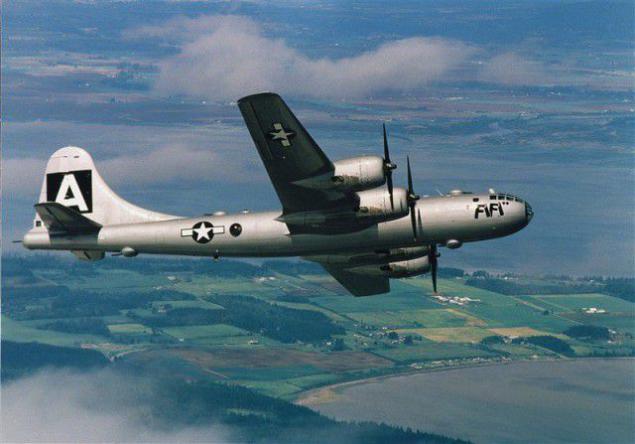
One catastrophic days in October 1951 - he was nicknamed "Black Tuesday" - MiGs shot down six out of ten "Superfortress". McGill first meeting with these aircraft were typically short. "One of the shooters saw him. Was spotted a small silhouette - says McGill. - That's when I saw it and ... - Arrows opened fire on him. " The centralized system of fire bomber provide some protection against fighters stresses McGill.
The pilot of the MiG-15 and Porphyry Ovsyannikov was then that the target on which fired an arrow B-29 bomber. "When they started on us to fire, smoke came, and here and think, or set on fire bomber, whether from the guns smoke?" - He recalled in 2007, when historians Oleg Korytov and Konstantin Chirkin interviewed him for the creation of an oral History combat pilots who took part in World War II and in the Korean War (These interviews are available on the website lend-lease.airforce.ru/english). Russian historians were asked to evaluate the small arms Ovsyannikov B-29. His answer: "Very good." However, the pilots of the MiG could open fire from a distance of about 700 meters, and from a distance, as highlighted McGill, they were able to attack the group of bombers, the B-29.
"The MiG-15 began to have a very big surprise - says the curator of the National Air and Space Museum (National Air and Space Museum), Robert van der Linden (Robert van der Linden). When compared to the North American A-86 "Sabre» (Sabre), immediately accepted into service after the appearance of the MiG-15, it can be said that "the MiGs were quicker, they had the best rate of climb and a great fire power," - he said. And the pilots flew on fighter "Sabre", knew it.
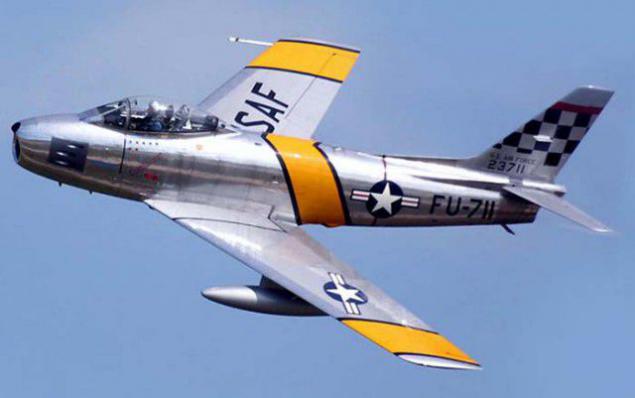
"You're quite right, it was humiliating, - says Lieutenant General of the Air Force retired Charles" Chick "Cleveland (Charles« Chick »Cleveland), recalling his first meeting with the MiG-15. He piloted the "Sabre" in Korea in 1952 as part of 334 Squadron fighter-interceptors. In just a few weeks before the squadron commander, the famous ace of World War II, George Davis (George Andrew Davis) was killed in a battle with Soviet fighter. (Davis was posthumously awarded the Medal of Honor (Medal of Honor)). At the time, Cleveland, his sharp turn to get away from the MiG exceeded parameters for stall "Sabres" and briefly went into a tailspin - according to him, it all happened "in the midst of the air battle." Cleveland, despite the admission of error, was able to stay alive and become an ace and then the Korean War, having to his credit five MiGs downed confirmed and two unconfirmed. Today he is president of the American Association of fighter aces (American Fighter Aces Association) and he still respects his opponent, with whom he had to fight 60 years ago. "Oh, it was a beautiful airplane - he says by phone from his home in Alabama - It should be remembered that in Korea, this small MiG-15 was able to successfully make something that was not capable of all these" Focke-Wulf "and "Messershmity" during the Second World War - it is squeezed out of the airspace of bombers of the United States of America. " Since November 1951 a B-29 aircraft remained on the ground during daylight hours and sorties were made only at night.

Inevitably, the story of the MiG-15 is returned to the duel with the "Sabre", and this rivalry determined the outcome of the air war in Korea. However, the relationship between MiGs and "Sabre" began during the previous war. Both of them drew inspiration from a concept created by the desperate search for models of weapons at the end of the Second World War, when the Air Force received the numerical superiority of the Allies over the German Air Force. Being in a desperate situation, the Luftwaffe High Command held a competition. The winner of the "Extraordinary competition fighter" was a plane represented by the head of the design department of the company "Focke-Fulf" Kurt Tank (Kurt Tank) and were designated as TA-183; It was a model of a jet fighter with one engine and high T-tail. In 1945, British troops entered the territory of the plant of the company "Focke-Fulf" on Bad Aylzene and confiscated drawings, models, and data obtained during wind tunnel tests, and all of these are immediately shared with the Americans. When Berlin fell, Soviet troops occupied the analysis of the material in the German Ministry of Aviation and found a complete set of drawings TA-183 aircraft, as well as the invaluable data on the tests of the wing. Less than two years later, and at intervals of just a few weeks, the United States and the Soviet Union provided a single-engine jet with wings positioned at an angle of 35 degrees, with a short fuselage and T-tail. These two aircraft were so similar to each other in Korea that American pilots, burning with the desire to write to their account some MiG, mistakenly shot down several aircraft "Sabre».
Neither of these fighters was not a copy of the model of the tank. Primitive aeronautical studies, as well as the limited availability of the engines and used while the materials inevitably led to the similarity of the developed models. The first jet aircraft developed by the Moscow-Mikoyan design bureau and Gurevich (MiG), became the MiG-9. Primitive engine MiG-9 - twin engine company BWM, captured in Germany - was not sufficient for the intended characteristics of the MiG-15, but Moscow has virtually no experience in creating superior in quality samples. Instead, the MiG-15 was originally installed Nene engine company Rolls-Royce - gorgeous in its innovativeness and hastily delivered in the Soviet Union by the British.
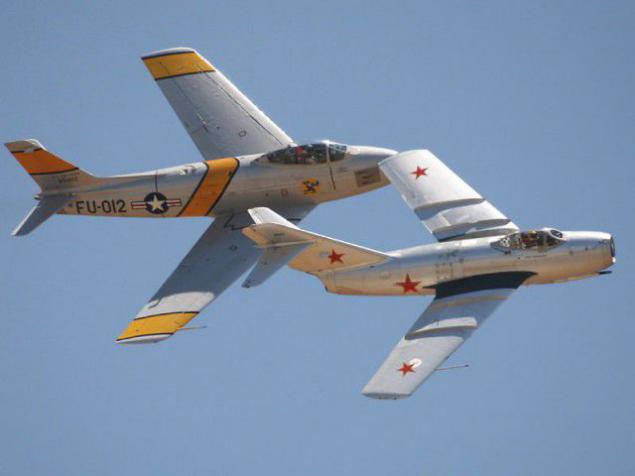
Wanting to bring a thaw in Anglo-Soviet relations, the British prime minister Clement Attlee Minister (Clement Attlee) invited the Soviet scientists and engineers at the plant Rolls-Royce for the study of how to make superior in quality British engines. In addition, the Attlee proposed licensed production of the USSR, and it was done in response to the solemn promise to use these engines only for non-military purposes. This proposal struck Americans who made loud protests. And what tips? Born in the Ukraine, the Soviet aviation historian Ilya Grinberg (Ilya Grinberg) believes that "Stalin himself could not believe it. He said: "Who in their right mind would sell us these things?" "Greenberg, a professor of technology at the University of New York at Buffalo, said that the presence in the delegation of Artem Mikoyan -" Mi "from the name of" MiG "- it was to serve as a warning about the consequences of the proposed transaction: delivered in 1946 in the USSR engines Rolls-Royce was urgently installed on MiG-15 and successfully passed flight tests. By the time when the fighter was ready for mass production, we were able to solve all engineering tasks related technologies Nene engine company Rolls-Royce, and as a result there was a copy under the designation Klimov RD-45. The British, according to Greenberg, complained of a violation of the license agreement, but "Russian just told them: Look, we made some changes and now it is possible to consider the development of our own».
But, as in the case of copying in the postwar Soviets cars from Western Europe, the Soviet Union produced engines were inferior in quality to the originals. The period from the beginning of the use of motor Klimov before failure is measured in hours. "Based on the state of the Soviet aircraft industry at the time, it was possible to assume that the quality control for enterprises MiG inferior to the level that existed in the West" - said Greenberg. Materials are at high pressure parts did not meet standards. Tolerances were insufficient. In fact, some of the problems in the MiG were associated with wings that do not fully meet the requirements. Greenberg describes the archival photographs of the production line of the engine into first-generation MiG-15. "What is there to say? - He says hesitantly. - It's not the men in white overalls on high-tech production. "
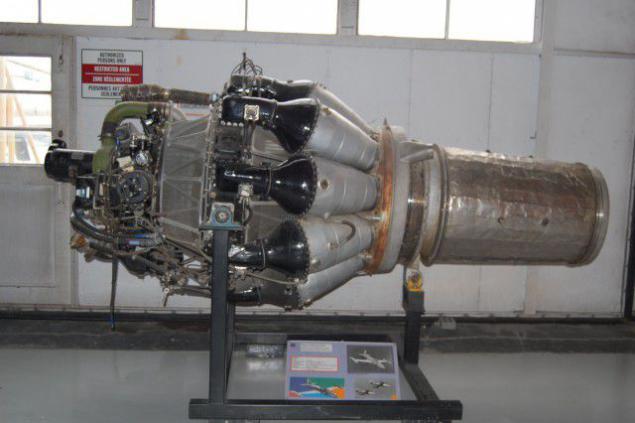
But by that time the other Soviet design bureau, headed by Andrei Tupolev, copied down to the last rivet two aircraft Boeing B-29, which during the Second World War made an emergency landing on Soviet territory. Greenberg argues that the accuracy achieved in the production of project Tupolev was transferred to work on the MiG. In fact, "a project to copy the B-29 pulled a forward not only Soviet aviation industry", - he said. Although MiGs continued to be inexpensive to manufacture and unnecessarily Spartan, the final version of the plane rose into the air in 1947, it proved to be durable and reliable.
The first wave of the pilots of F-86 from the 4th Regiment included veterans of the Second World War. Obviously, they had to confront the Chinese inexperienced pilots to the helm of the MiG-15, prepared by Russian specialists. However, it soon became clear that the North Korean MiGs fly is not recent graduates of flying schools. Fighter pilot "Sabre" was called the mysterious pilot of the MiG-15 «honchos», which in Japanese means "bosses." Today we know that in the cockpits of the North Korean MiGs more were battle-hardened pilots of the Soviet Air Force.
Chick Cleveland describes meeting with MiG pilots whose skills expected not only training in classrooms. Cleveland approached the Yalu River at an altitude of about 12,000 meters, when he appeared in front of flying at high speed MiG. The speed of both aircraft approached Mach number, when they flew side by side. "I said to myself: This is not a drill, and now it's real." By using superior "Sabres" in speed and turning radius, acceleration and he used it was in the tail of the MiG. "I approached him very closely, and it seemed that he was sitting next to me in the living room».
Remembering this time the stories of pilots during the Second World War, who at the height of the air battle forgot to press the trigger, Cleveland looked down for a moment in order to check the position of the toggle switches on its "Sabre". "When I looked up again, this moment in front of me was gone." Cleveland and looked forward, backward "around itself and around the horizon" - nothing. There remained only one chilling possibility. "I'm a little turned his F-86, and it is, of course, was right under me." It was a clever attempt to turn the tables, made MiG pilot, which sharply limited the supply of fuel and slowed, turned out to be the bottom, and then sedevshego behind him on the tail of the enemy. "I gradually became a fox, and he turned into a dog" - laughing, said Cleveland. However, after several maneuvers "Sabre" has restored its position and was again on the tail of the Russian pilot, who had to resort "to the classic tactics of MiGs" - he began to climb sharply. Cleveland bursts of engine and fuselage MiG, after which he slowly shifted to the left, made a dive and went down towards the ground. Taking into account the characteristics of the MiG, dive at high speed testified about the crash, rather than an exit strategy.

Due to the fact that the MiGs questioned the superiority of the United States in the air, the Americans have tried by all means get their hands on Soviet technology, but they managed to get capable of flying the MiG-15 in September 1953, when a North Korean pilot defector But Kum Sok (No Kum-Sok) landed his fighter airbase Gimpo (Kimpo) in South Korea. Flights Korean MiG had to demonstrate, with some machines had to deal with American pilots. To assess the Soviet fighter best pilots of the Air Force of the United States - Captain Harold Collins (Harold «Tom» Collins), from the test division airbase Chuck Wright (Field Wright) and Major Charles Yeager (Charles «Chuck» Yeagger) were sent to the Air Base Kadena (Kadena) in Japan. September 29, 1953 the first Western pilot took off on a mysterious MiG. This flight confirmed the expected excellent quality, but also to detect and less pleasant characteristics of the MiG-15. "Pilot defector told me that the MiG-15 has a tendency to stall at a set rate during overload even one G, and also breaks down into a tailspin from which often can not get out" - said Collins in 1991, giving an interview for the collection of memoirs "Test flights at the airbase Old Wright Field». "White strip has been drawn on the front panel, which is used to center the steering handle while trying to exit from a spin. He said that in his eyes his instructor went into a tailspin, and then died ».
Test flights have shown that the speed of the MiG-15 did not exceed 0, 92 Mach. In addition, the aircraft control system was ineffective when diving down and making sharp maneuvers. During air combat in Korea, American pilots watched as the MiG-15 approaching the limit of its capabilities, and then they suddenly dumped at high speed into a tailspin and destroyed, often losing the wings or tail surfaces.
Soviet pilots also knew the characteristics of the "Sabres", as the American pilots - the possibility of MiGs. "You can not force me to attack them at the maximum speed of rotation, - said the Soviet MiG-15 pilot Vladimir Zabelin in one of his oral presentations, translated in 2007 - in which case it could easily be on my tail. When I myself went to them tail, they knew they could get away from me only as a result of horizontal maneuvers ... Usually I attacked them from behind and being a little lower ... When he began to maneuver, I tried to intercept it. If I knocked it in for the first third of the turn, I was forced to stop the attack and leave ».

Report bomber crew has caused panic in the American-organized chain of command. Although the description of the intruder aircraft pilots did not match any of the samples used in this theater of war, US intelligence officers quickly made an educated guess. They said that it was a MiG-15, raise, most likely from an air base in the territory of Manchuria. Prior to this incident, analysts believed that Stalin only gave permission to use the MiGs to defend Shanghai from the Chinese Nationalist bomber raids. This moment was a dark omen: the involvement of China in Korea increased, and Soviet technology be spread.
For Crew clumsy "Superfortress" the aircraft rapidly penetrate their construction, it became a source of suffocating fear. "In my opinion, everyone was scared," - says a former pilot of the B-29 Earl McGill (Earl McGill), describing a noticeable absence of negotiations on the radio during the flight of its four-engine plane Boeing - these cars have completed the second world war - long before the attack on airbase ANAP (Namsi), located near the border between North Korea and China. "In preparation for the first task, we have provided information on the interception took place. I was so scared that day as never in my life, even when I made a sortie to the B-52 aircraft (in Vietnam). " Earlier in the conversation in the room to rescue the pilots had a lot of black humor. "The guy who led the briefing on the upcoming route, was similar to the employee's funeral" - adds McGill. He spent this briefing in a special cylinder, worn and undertakers.

One catastrophic days in October 1951 - he was nicknamed "Black Tuesday" - MiGs shot down six out of ten "Superfortress". McGill first meeting with these aircraft were typically short. "One of the shooters saw him. Was spotted a small silhouette - says McGill. - That's when I saw it and ... - Arrows opened fire on him. " The centralized system of fire bomber provide some protection against fighters stresses McGill.
The pilot of the MiG-15 and Porphyry Ovsyannikov was then that the target on which fired an arrow B-29 bomber. "When they started on us to fire, smoke came, and here and think, or set on fire bomber, whether from the guns smoke?" - He recalled in 2007, when historians Oleg Korytov and Konstantin Chirkin interviewed him for the creation of an oral History combat pilots who took part in World War II and in the Korean War (These interviews are available on the website lend-lease.airforce.ru/english). Russian historians were asked to evaluate the small arms Ovsyannikov B-29. His answer: "Very good." However, the pilots of the MiG could open fire from a distance of about 700 meters, and from a distance, as highlighted McGill, they were able to attack the group of bombers, the B-29.
"The MiG-15 began to have a very big surprise - says the curator of the National Air and Space Museum (National Air and Space Museum), Robert van der Linden (Robert van der Linden). When compared to the North American A-86 "Sabre» (Sabre), immediately accepted into service after the appearance of the MiG-15, it can be said that "the MiGs were quicker, they had the best rate of climb and a great fire power," - he said. And the pilots flew on fighter "Sabre", knew it.

"You're quite right, it was humiliating, - says Lieutenant General of the Air Force retired Charles" Chick "Cleveland (Charles« Chick »Cleveland), recalling his first meeting with the MiG-15. He piloted the "Sabre" in Korea in 1952 as part of 334 Squadron fighter-interceptors. In just a few weeks before the squadron commander, the famous ace of World War II, George Davis (George Andrew Davis) was killed in a battle with Soviet fighter. (Davis was posthumously awarded the Medal of Honor (Medal of Honor)). At the time, Cleveland, his sharp turn to get away from the MiG exceeded parameters for stall "Sabres" and briefly went into a tailspin - according to him, it all happened "in the midst of the air battle." Cleveland, despite the admission of error, was able to stay alive and become an ace and then the Korean War, having to his credit five MiGs downed confirmed and two unconfirmed. Today he is president of the American Association of fighter aces (American Fighter Aces Association) and he still respects his opponent, with whom he had to fight 60 years ago. "Oh, it was a beautiful airplane - he says by phone from his home in Alabama - It should be remembered that in Korea, this small MiG-15 was able to successfully make something that was not capable of all these" Focke-Wulf "and "Messershmity" during the Second World War - it is squeezed out of the airspace of bombers of the United States of America. " Since November 1951 a B-29 aircraft remained on the ground during daylight hours and sorties were made only at night.

Inevitably, the story of the MiG-15 is returned to the duel with the "Sabre", and this rivalry determined the outcome of the air war in Korea. However, the relationship between MiGs and "Sabre" began during the previous war. Both of them drew inspiration from a concept created by the desperate search for models of weapons at the end of the Second World War, when the Air Force received the numerical superiority of the Allies over the German Air Force. Being in a desperate situation, the Luftwaffe High Command held a competition. The winner of the "Extraordinary competition fighter" was a plane represented by the head of the design department of the company "Focke-Fulf" Kurt Tank (Kurt Tank) and were designated as TA-183; It was a model of a jet fighter with one engine and high T-tail. In 1945, British troops entered the territory of the plant of the company "Focke-Fulf" on Bad Aylzene and confiscated drawings, models, and data obtained during wind tunnel tests, and all of these are immediately shared with the Americans. When Berlin fell, Soviet troops occupied the analysis of the material in the German Ministry of Aviation and found a complete set of drawings TA-183 aircraft, as well as the invaluable data on the tests of the wing. Less than two years later, and at intervals of just a few weeks, the United States and the Soviet Union provided a single-engine jet with wings positioned at an angle of 35 degrees, with a short fuselage and T-tail. These two aircraft were so similar to each other in Korea that American pilots, burning with the desire to write to their account some MiG, mistakenly shot down several aircraft "Sabre».
Neither of these fighters was not a copy of the model of the tank. Primitive aeronautical studies, as well as the limited availability of the engines and used while the materials inevitably led to the similarity of the developed models. The first jet aircraft developed by the Moscow-Mikoyan design bureau and Gurevich (MiG), became the MiG-9. Primitive engine MiG-9 - twin engine company BWM, captured in Germany - was not sufficient for the intended characteristics of the MiG-15, but Moscow has virtually no experience in creating superior in quality samples. Instead, the MiG-15 was originally installed Nene engine company Rolls-Royce - gorgeous in its innovativeness and hastily delivered in the Soviet Union by the British.

Wanting to bring a thaw in Anglo-Soviet relations, the British prime minister Clement Attlee Minister (Clement Attlee) invited the Soviet scientists and engineers at the plant Rolls-Royce for the study of how to make superior in quality British engines. In addition, the Attlee proposed licensed production of the USSR, and it was done in response to the solemn promise to use these engines only for non-military purposes. This proposal struck Americans who made loud protests. And what tips? Born in the Ukraine, the Soviet aviation historian Ilya Grinberg (Ilya Grinberg) believes that "Stalin himself could not believe it. He said: "Who in their right mind would sell us these things?" "Greenberg, a professor of technology at the University of New York at Buffalo, said that the presence in the delegation of Artem Mikoyan -" Mi "from the name of" MiG "- it was to serve as a warning about the consequences of the proposed transaction: delivered in 1946 in the USSR engines Rolls-Royce was urgently installed on MiG-15 and successfully passed flight tests. By the time when the fighter was ready for mass production, we were able to solve all engineering tasks related technologies Nene engine company Rolls-Royce, and as a result there was a copy under the designation Klimov RD-45. The British, according to Greenberg, complained of a violation of the license agreement, but "Russian just told them: Look, we made some changes and now it is possible to consider the development of our own».
But, as in the case of copying in the postwar Soviets cars from Western Europe, the Soviet Union produced engines were inferior in quality to the originals. The period from the beginning of the use of motor Klimov before failure is measured in hours. "Based on the state of the Soviet aircraft industry at the time, it was possible to assume that the quality control for enterprises MiG inferior to the level that existed in the West" - said Greenberg. Materials are at high pressure parts did not meet standards. Tolerances were insufficient. In fact, some of the problems in the MiG were associated with wings that do not fully meet the requirements. Greenberg describes the archival photographs of the production line of the engine into first-generation MiG-15. "What is there to say? - He says hesitantly. - It's not the men in white overalls on high-tech production. "

But by that time the other Soviet design bureau, headed by Andrei Tupolev, copied down to the last rivet two aircraft Boeing B-29, which during the Second World War made an emergency landing on Soviet territory. Greenberg argues that the accuracy achieved in the production of project Tupolev was transferred to work on the MiG. In fact, "a project to copy the B-29 pulled a forward not only Soviet aviation industry", - he said. Although MiGs continued to be inexpensive to manufacture and unnecessarily Spartan, the final version of the plane rose into the air in 1947, it proved to be durable and reliable.
The first wave of the pilots of F-86 from the 4th Regiment included veterans of the Second World War. Obviously, they had to confront the Chinese inexperienced pilots to the helm of the MiG-15, prepared by Russian specialists. However, it soon became clear that the North Korean MiGs fly is not recent graduates of flying schools. Fighter pilot "Sabre" was called the mysterious pilot of the MiG-15 «honchos», which in Japanese means "bosses." Today we know that in the cockpits of the North Korean MiGs more were battle-hardened pilots of the Soviet Air Force.
Chick Cleveland describes meeting with MiG pilots whose skills expected not only training in classrooms. Cleveland approached the Yalu River at an altitude of about 12,000 meters, when he appeared in front of flying at high speed MiG. The speed of both aircraft approached Mach number, when they flew side by side. "I said to myself: This is not a drill, and now it's real." By using superior "Sabres" in speed and turning radius, acceleration and he used it was in the tail of the MiG. "I approached him very closely, and it seemed that he was sitting next to me in the living room».
Remembering this time the stories of pilots during the Second World War, who at the height of the air battle forgot to press the trigger, Cleveland looked down for a moment in order to check the position of the toggle switches on its "Sabre". "When I looked up again, this moment in front of me was gone." Cleveland and looked forward, backward "around itself and around the horizon" - nothing. There remained only one chilling possibility. "I'm a little turned his F-86, and it is, of course, was right under me." It was a clever attempt to turn the tables, made MiG pilot, which sharply limited the supply of fuel and slowed, turned out to be the bottom, and then sedevshego behind him on the tail of the enemy. "I gradually became a fox, and he turned into a dog" - laughing, said Cleveland. However, after several maneuvers "Sabre" has restored its position and was again on the tail of the Russian pilot, who had to resort "to the classic tactics of MiGs" - he began to climb sharply. Cleveland bursts of engine and fuselage MiG, after which he slowly shifted to the left, made a dive and went down towards the ground. Taking into account the characteristics of the MiG, dive at high speed testified about the crash, rather than an exit strategy.

Due to the fact that the MiGs questioned the superiority of the United States in the air, the Americans have tried by all means get their hands on Soviet technology, but they managed to get capable of flying the MiG-15 in September 1953, when a North Korean pilot defector But Kum Sok (No Kum-Sok) landed his fighter airbase Gimpo (Kimpo) in South Korea. Flights Korean MiG had to demonstrate, with some machines had to deal with American pilots. To assess the Soviet fighter best pilots of the Air Force of the United States - Captain Harold Collins (Harold «Tom» Collins), from the test division airbase Chuck Wright (Field Wright) and Major Charles Yeager (Charles «Chuck» Yeagger) were sent to the Air Base Kadena (Kadena) in Japan. September 29, 1953 the first Western pilot took off on a mysterious MiG. This flight confirmed the expected excellent quality, but also to detect and less pleasant characteristics of the MiG-15. "Pilot defector told me that the MiG-15 has a tendency to stall at a set rate during overload even one G, and also breaks down into a tailspin from which often can not get out" - said Collins in 1991, giving an interview for the collection of memoirs "Test flights at the airbase Old Wright Field». "White strip has been drawn on the front panel, which is used to center the steering handle while trying to exit from a spin. He said that in his eyes his instructor went into a tailspin, and then died ».
Test flights have shown that the speed of the MiG-15 did not exceed 0, 92 Mach. In addition, the aircraft control system was ineffective when diving down and making sharp maneuvers. During air combat in Korea, American pilots watched as the MiG-15 approaching the limit of its capabilities, and then they suddenly dumped at high speed into a tailspin and destroyed, often losing the wings or tail surfaces.
Soviet pilots also knew the characteristics of the "Sabres", as the American pilots - the possibility of MiGs. "You can not force me to attack them at the maximum speed of rotation, - said the Soviet MiG-15 pilot Vladimir Zabelin in one of his oral presentations, translated in 2007 - in which case it could easily be on my tail. When I myself went to them tail, they knew they could get away from me only as a result of horizontal maneuvers ... Usually I attacked them from behind and being a little lower ... When he began to maneuver, I tried to intercept it. If I knocked it in for the first third of the turn, I was forced to stop the attack and leave ».

